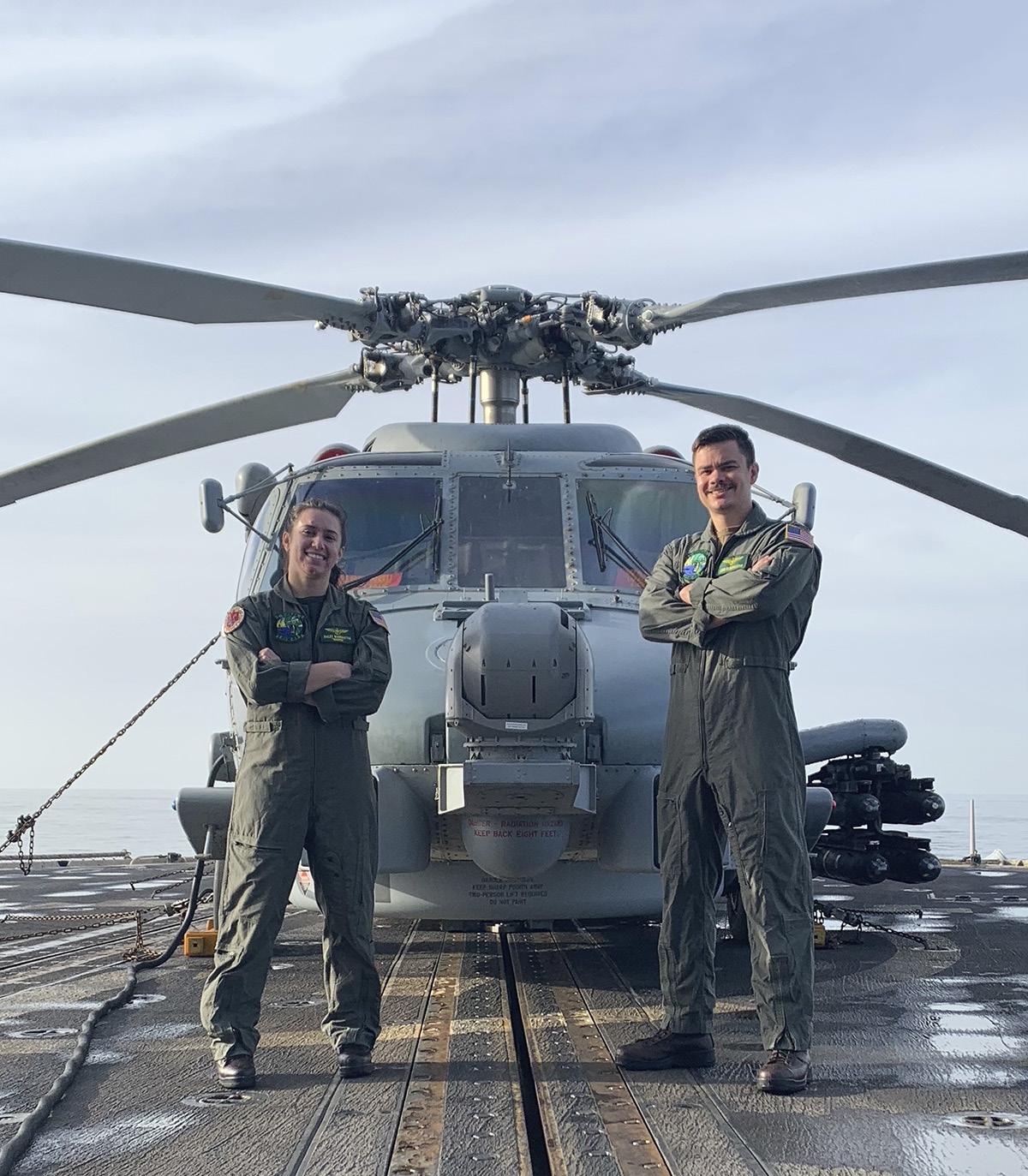Features PEP Part 1: What Is PEP? I’m Interested… LT Randall A. Perkins IV, USN
I
f you were like me, you had heard whispers of Personnel Exchange Program (PEP) flying opportunities. You were aware that there might be some exchange gigs out in the world of Naval Aviation, but you never really dug into it. You had met one, possibly two, pilots from your community who had returned from a PEP tour and “lived to tell the tale.” They “lived to tell the tale” in the sense that they successfully progressed to their next tour or career checkpoint (such as DH) despite the risk to their career that they had accepted by pursuing an “off-path” job. For those taking PEP billets, “living to tell the tale” was a not a guarantee because until recently, certain communities had not yet begun to realize the true value of PEP tours. This is a value that not only benefits the individual, but one that will also benefit that individual’s service community. To paraphrase a prior skipper of mine, “there is something unique about living overseas, being immersed in another culture, and taking part in a foreign unit that is an envelope expanding experience. It forces you to adapt, get humbled in the process, and see things differently. All great attributes we want in our future leaders.” Maybe you romanticized about the opportunity to fly overseas with an exchange unit but assumed your timing would never work out. The adventurous notion of piloting an aircraft in another language and exploring a new part of the world was always a dream, but never a real option. Well, I’m here today to tell you that these tours do exist, they are possible, and it seems Naval Aviation as a whole has started to increase their value…in my unofficial opinion. In fact, the PEP community has grown significantly in size since 2008. It is possible that more communities have started to value a diverse range of experiences in their leadership, increasing the appetite and availability for these opportunities. A caveat before we begin: The information provided here is not official; it comes from my own experience in a Navy PEP flying billet, and I am still learning as I go. Any other prior or current PEP officers, specifically within naval aviation, please contact me with any and all corrections to the information I provide. The purpose of this article and follow-on PEP articles will be to try and share details regarding the following: general overview of PEP and the requirements, aeronautical differences between the MH60S “Knighthawk” and AS365 “Dauphin”, lessons learned from flying in a foreign language, and a compare/contrast of US Naval Aviation and French Naval Aviation. I’ll start with a bit of background on myself to give you an idea of how I ended up here and then dive into the beginning details of PEP and the initial requirements of the program Rotor Review #153 Summer '21
AS-365 Dauphin N
that we will cover in “PEP Part 1.” My name is LT Randall A. Perkins IV, an MH-60S pilot by trade currently serving my disassociated sea tour with La Flottille 35F, a French Naval Aviation helicopter unit stationed out of Hyères BAN - Base d’aéronautique navale. The 35F flies a few different models of the AS365 Dauphin and is comprised of several detachments. They supply the Search & Rescue (SAR) detachment onboard the Charles de Gaulle (CDG) French Aircraft Carrier along with several “Le Service Publique,” or Coastal SAR (coast guard) units for the coast of France and one or two other remote French territories. Additionally, they also have the odd pop-up detachment here and there onboard various French vessels. The unit is representative of a Helicopter Sea Combat (HSC) Expeditionary (EXP) squadron mixed with a United States Coast Guard (USCG) squadron. Prior to this tour I had the great pleasure of conducting two Landing Helicopter Deck (LHD) deployments with my initial Fleet Squadron (HSC-21 “Blackjacks”) out of San Diego, CA on both the USS Essex (LHD 2) and USS Makin Island (LHD 8). Following my initial sea tour, I completed my shore tour with Helicopter Sea Combat Wing Pacific (HSCWP) and HSC-3. My flying during this tour was spent primarily as an instructor with the Fleet Replacement Squadron (FRS) of HSC-3 but I also had the opportunity to fly with several other HSCWP squadrons during my time as a Wing Instructor Pilot (IP). I was lucky enough to have the chance to fly as an additionally qualified pilot during work-ups onboard the LHD with my prior squadron the “Blackjacks,” with the HSC-8 “Eightballers” while serving as one of the Rim of the Pacific Exercise - Helicopter Element Coordinators (RIMPAC HECs) in Hawaii, with the HSC-12 “Golden Falcons” in Atsugi, Japan, and with the HSC-25 “Island Knights” in Guam during Command Assist Visits (CAVs) provided by HSCWP. Additional San Diego squadrons such as HSC-23 and HSC-14 were also fantastic units to work with flying anything from Day FAMs to UGR flights. The chance to integrate and fly with several HSC squadrons during my time 58









































